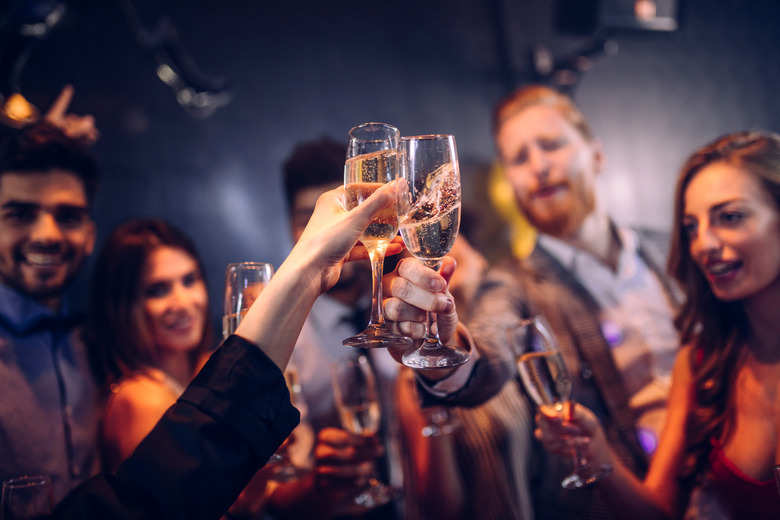This Is Why Champagne Is The Drink Of Celebration
Whether you're celebrating your college graduation, your mother's wedding, or New Year's Eve at midnight, your festivities likely have one thing in common: Champagne. The universal drink of celebration, Champagne has come to symbolize all things congratulatory and light. But when did this tradition start? With so many other delicious drinks that could be used to celebrate, why Champagne?
10 Really, Really Expensive Champagnes
Of course, Champagne is an elegant choice. All Champagne — so long as it's real Champagne — is somewhat special, since it hails all the way from the cellars of the Champagne region of France. So you might think the lofty price is what makes Champagne so celebratory. But Champagne isn't always more expensive that other sparkling wines. In fact, some Champagne is very affordable.
The real reason we drink Champagne to celebrate is more special than that; it actually dates back centuries.
Like many other food products you probably don't think twice about, Champagne was invented entirely by accident. At least, that's how the story goes. Dom Perignon, one of the largest Champagne houses in the world, still claims credit for inventing Champagne. Their legacy is part of what makes them so elite — that, and the fact that they refuse to release Champagne that isn't vintage.
It's impossible to verify the story, but legend has it Champagne was invented by the Benedictine monk Dom Perignon himself. Back then, bubbles were thought to ruin wine — not elevate it. Perignon was the cellar master for the Abbey of Hautvillers, meaning he was given the task of overseeing wine production and eliminating the risk of bubbles. However, with only faith and 17th-century science to inform his efforts, Perignon failed. He decided to try the ruined wine (perhaps to drown his sorrows?) but found the taste surprisingly delightful. "Come quick!" the legend says Perignon shouted. "I am drinking the stars!" Champagne was born.
The monks quickly found that others shared Perignon's interest in the sparkling wine; the abbey's method spread and Champagne production increased. Bottles would frequently explode (they do so much less often now, thanks to modern fermentation techniques) as workers in cellars tried their luck at recreating the magic. According to the History Channel, most cellars in 17th-century France lost nearly 20 percent of their wine bottles due to explosions. These bottles would spontaneously shatter, sometimes injuring the workers; they called these bottles le vin du diable, or "the devil's wine." A blow to the head from a burst bottle was probably not what Perignon had in mind when he said he was seeing stars.
Word of sparkling wine had spread. In England, scientist Christopher Merret discovered that sugar played a role in adding to Champagne's effervescence. Too much sugar and the bottle would explode; too little, and there weren't enough bubbles in the bubbly. Since science was still working on perfecting the dangerous beverage, Champagne became very expensive.
Due to its cost and novelty, it became a favorite drink for royals in Europe. Coronations, birthdays, and other royal festivities would have been commemorated with bottles upon bottles of Champagne. According to the Comite Champagne, guests of the Palais Royal in Paris just loved the way the cork came "jumping out of the bottle!" In 18th-century France, the era of Marie Antoinette and the French Revolution, entertainment was a principal point of focus for the royal family. Madame de Pompadour, official chief mistress of Louis XV, allegedly ordered Champagne by the gallon for her parties. One of her parties in 1739 ran through at least 1,800 bottles of Champagne in just one evening!
The tradition continued. And now, Champagne is the drink of choice for any special occasion. Who knew Champagne had such a (literally) rich history? There are many other fascinating facts you probably don't know about Champagne.


